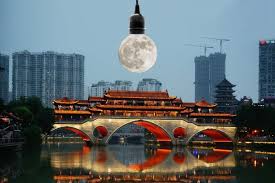
Breaking News
 Imagine All the People: Food, Freedom and What It Means To Be Human
Imagine All the People: Food, Freedom and What It Means To Be Human
 Long-term aspartame intake sabotages brain and heart function
Long-term aspartame intake sabotages brain and heart function
 NonConformist Series: Practical Wealth - Join us virtually Dec 29-30, 2025
NonConformist Series: Practical Wealth - Join us virtually Dec 29-30, 2025
 New bill would allow private citizens to fight cartels: 'WE ARE UNDER ATTACK'
New bill would allow private citizens to fight cartels: 'WE ARE UNDER ATTACK'
Top Tech News
 Perfect Aircrete, Kitchen Ingredients.
Perfect Aircrete, Kitchen Ingredients.
 Futuristic pixel-raising display lets you feel what's onscreen
Futuristic pixel-raising display lets you feel what's onscreen
 Cutting-Edge Facility Generates Pure Water and Hydrogen Fuel from Seawater for Mere Pennies
Cutting-Edge Facility Generates Pure Water and Hydrogen Fuel from Seawater for Mere Pennies
 This tiny dev board is packed with features for ambitious makers
This tiny dev board is packed with features for ambitious makers
 Scientists Discover Gel to Regrow Tooth Enamel
Scientists Discover Gel to Regrow Tooth Enamel
 Vitamin C and Dandelion Root Killing Cancer Cells -- as Former CDC Director Calls for COVID-19...
Vitamin C and Dandelion Root Killing Cancer Cells -- as Former CDC Director Calls for COVID-19...
 Galactic Brain: US firm plans space-based data centers, power grid to challenge China
Galactic Brain: US firm plans space-based data centers, power grid to challenge China
 A microbial cleanup for glyphosate just earned a patent. Here's why that matters
A microbial cleanup for glyphosate just earned a patent. Here's why that matters
 Japan Breaks Internet Speed Record with 5 Million Times Faster Data Transfer
Japan Breaks Internet Speed Record with 5 Million Times Faster Data Transfer
Fusion breakthrough as China's "artificial sun" reaches 100 million degrees

During a four-month experiment, the "Chinese artificial sun" reached a core plasma temperature of over 100 million degrees Celsius – that's more than six times hotter than the interior of the Sun – and a heating power of 10 MW, enabling the study of various aspects of practical nuclear fusion in the process.
Beginning operations in 2006, the Chinese designed and developed EAST is located at the Hefei Institutes of Physical Science of the Chinese Academy of Sciences (CASHIPS) and is billed as an open test facility for conducting steady-state operations and ITER-related physics research by both Chinese and international scientists. And, like many other fusion experiments, the ultimate goal is to produce a practical nuclear fusion power reactor.
EAST is a tokamak reactor, which consists of a metal torus or doughnut that is exhausted to a hard vacuum and then injected with hydrogen atoms. These atoms are then heated by a number of different methods to create a plasma that is then compressed using a series of powerful superconducting magnets.

 Advanced Propulsion Resources Part 1 of 2
Advanced Propulsion Resources Part 1 of 2

